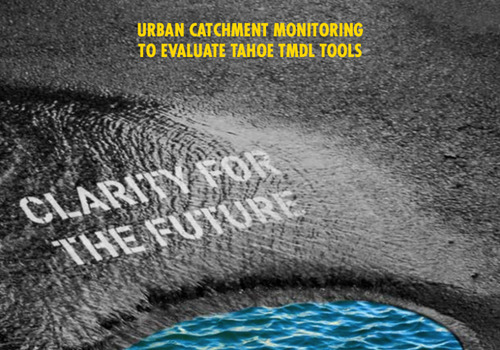Executive Summary excerpt:
This research developed specific recommendations to align urban stormwater monitoring datasets with priority TMDL, EIP and other water quality implementation and management questions in the Tahoe Basin. The Tahoe Basin stormwater community has a need to generate multi-year stormwater quality datasets that are capable of: 1) evaluating trends in urban pollutant loading over time as a result of water quality improvement management actions and 2) informing priority needs of the stormwater tools used by the TMDL program. The Regional Stormwater Monitoring Program (RSWMP) is intended to oversee how stormwater data is obtained, managed and reported to address these needs. The recommendations herein provide technical details and guidance to link the site specific datasets obtained with how they will be analyzed and reported such that the results can be used to meet these priority management questions.
The development of these technical recommendations required relevant and applicable datasets upon which the research team could test various statistical approaches, identify the collective reporting metrics and create the recommended results summaries. Given that no such datasets currently existed, the research team utilized available tools and existing data to create reasonable, but hypothetical, datasets upon which the iterative development of the data analysis and reporting formats could be conducted. The creation of tangible example datasets was critical to this research to provide the context and opportunities from which the process, techniques and final recommendations could be generated. Due to the fabrication of the data contained herein, it must be realized that none of the absolute results are in any way representative of measured or even hypothesized results or findings related to Tahoe stormwater quality. The value of this research is the definitions, guidance and processes provided, which translate the datasets to be generated for two high priority objectives into meaningful and easily interpretable results. In addition, the recommended data analysis and reporting techniques were identified such that they could be consistently and cost-effectively implemented by resource agency staff who are not necessarily statistical experts.


